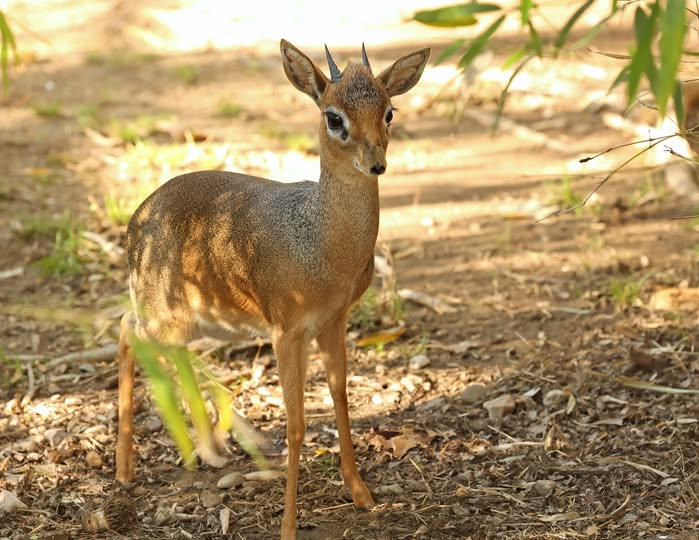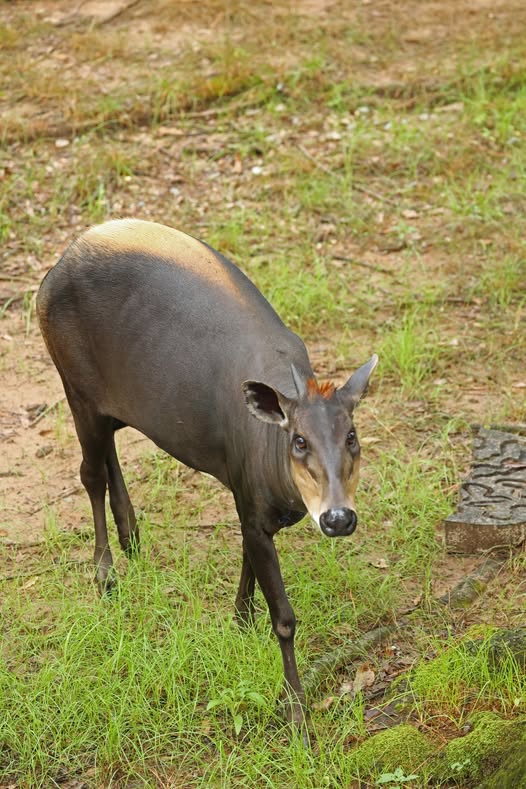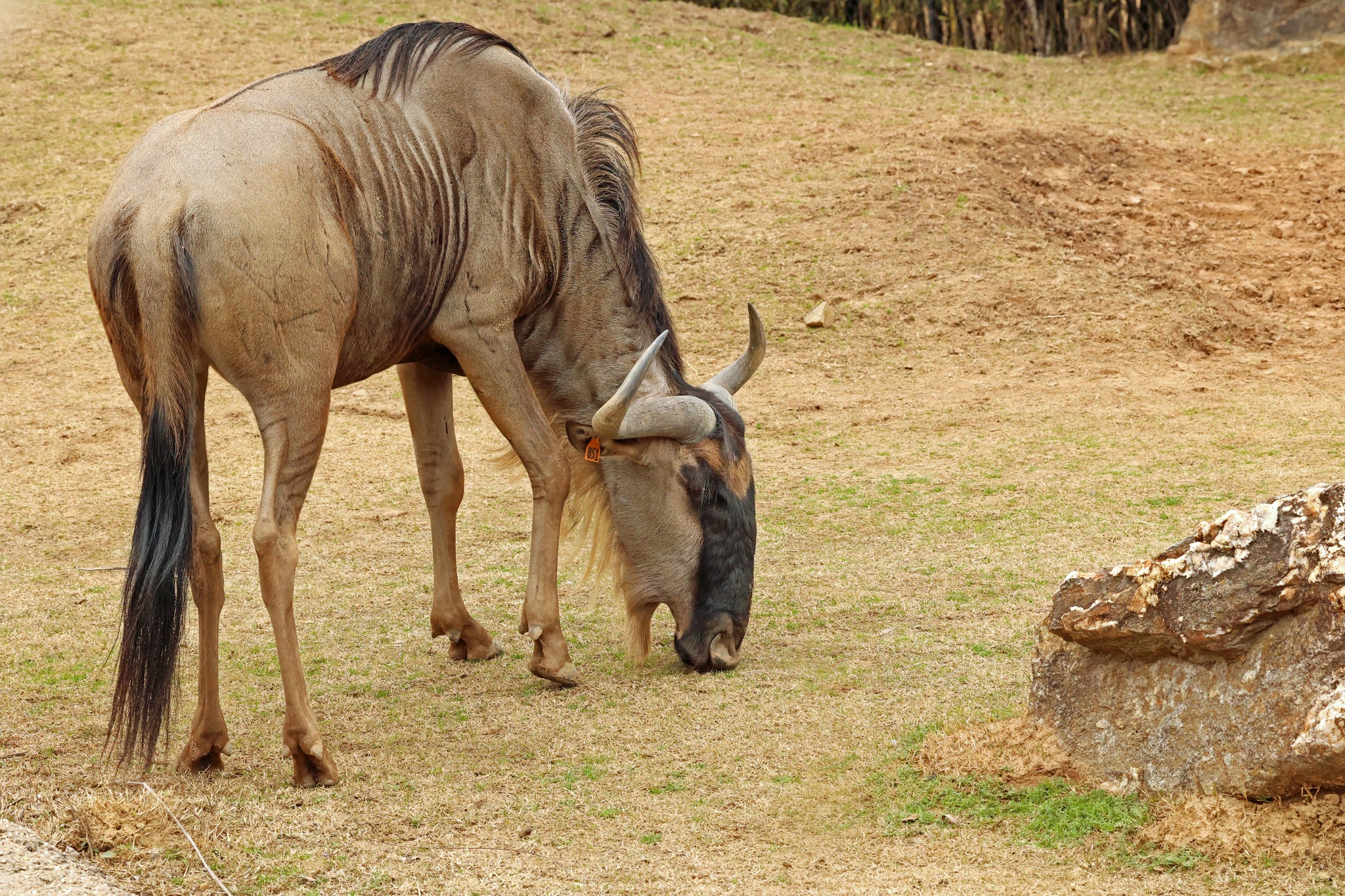Antelopes
Antelopes are a diverse group of herbivorous mammals belonging to the Bovidae family, which also includes cattle, goats, and sheep. Renowned for their graceful appearance and remarkable agility, antelopes are found in various habitats across Africa, Asia, and parts of Europe. These majestic creatures come in a wide range of shapes and sizes, from the diminutive dik-diks to the towering elands. Known for their distinctive horns, which vary in shape and size between species, antelopes use these structures for defense, dominance displays, and sometimes even as tools for foraging. As herbivores, antelopes primarily feed on grasses, leaves, and other vegetation, playing a vital role in shaping their ecosystems as both grazers and browsers.




Dik Dik
Dik-diks are named for the distinctive alarm call they make when startled—a “dik-dik” sound that echoes through the African bush. These petite antelopes stand only about 12 to 16 inches tall at the shoulder, making them one of the smallest antelope species in the world. Despite their size, dik-diks are incredibly agile and can dart through dense vegetation with ease, thanks to their slender legs and nimble frame.
One of the most fascinating aspects of dik-diks is their monogamous nature. These antelopes typically form lifelong pairs, which is relatively rare in the animal kingdom. They are also known for their territorial behavior, often marking their small home ranges with dung and glandular secretions. Their diet consists mainly of leaves, fruits, and flowers, which they expertly select to maximize nutrition while avoiding water sources—dik-diks obtain most of their hydration from the food they eat.
Habitat/Range:
The Dik-diks’ unique body cooling system provides them with the ability to inhabit a wide range of arid scrubland forests, spreading through two regions of Africa; East Africa covering southern Somalia to central Tanzania and Southern Africa covering northern Namibia entering parts of south-western Angola.
Size:
6-13 lbs (3-6 kg); 12 to 16 in (30-40 cm) high at the shoulder
- Dik-diks are one of the world’s smallest antelope species
- Dik- Dik tend to form monogamous mating pairs and can have two babies a year
- They get their name from the distinctive ‘dik-dik’ call they make when startled – they will jump from their hiding place and move in a series of zig-zag leaps while making this call to confuse predators
Dik Dik are listed as least concern by the IUCN. Over-hunting by humans is the greatest threat to this species.
Greater Kudu
The Greater Kudu, is a striking antelope species native to eastern and southern Africa. Known for its majestic spiral horns, which can reach impressive lengths, the Greater Kudu is one of the largest antelope species in the world. Its distinctive greyish-brown coat is adorned with striking white vertical stripes, providing effective camouflage in its natural habitat of woodlands, scrublands, and savannas. These magnificent herbivores are primarily browsers, feeding on leaves, shoots, and fruits, and they are known for their cautious and elusive nature. Despite their size, Greater Kudus are agile and capable of leaping over obstacles with ease.
Males have 6-10 stripes along their brown body, and have spiral horns which can reach over a meter in length. Females are smaller than males, lack horns, and have less noticeable stripes along their yellowish-gray colored fur. Both sexes, however, have a band of fur along their back which forms their mane. They also have a white stripe between their eyes and are known for their large ears.
Habitat/Range:
Greater kudu tend to live in the mountains, savanna woodlands, and hills. They avoid open grassland and forests and live in southeast Chad, Sudan, and Ethiopia, as well as parts of eastern and southern Africa.
Size:
Male: 384 to 758 lb (174 to 344 kg); 48 to 56 in (122 to 143 cm) high at the shoulder
Female: 247 to 462 lb (112 to 210 kg); 39 to 55 in (99 to 139 cm) high at the shoulder
- Male kudu have the largest horns of any antelope species, spiraling up to 6 feet. Each horn makes about 2.5 graceful twists.
- Kudu can leap over obstacles that are 8 feet high with ease.
Greater kudus are listed as least concern by the IUCN. Increasing human population, habitat loss and unregulated hunting are their greatest risks. Although this species can thrive in settled areas, they are threatened by deforestation due to agriculture and charcoal production. Kudu have also been hunted extensively for meat, hides and their highly prized horns which are used for musical instruments, containers, ritual objects and as a symbol of male potency. Additionally, kudu are highly susceptible to the rinderpest virus and other diseases. Despite these threats the wild population is estimated at about 482,000.
Yellow-Backed Duiker
The Yellow-Backed Duiker, is a captivating antelope species native to the forests of West and Central Africa. Recognizable by its striking yellowish-gold coat, which contrasts with its darker back and sides, this medium-sized duiker is named for the prominent yellow patch on its back. Despite its relatively small stature, the Yellow-Backed Duiker possesses remarkable agility and speed, enabling it to navigate dense forest understories with ease. As herbivores, they primarily feed on a varied diet of leaves, fruits, and vegetation found within their forest habitat. Due to habitat loss and hunting pressure, these elusive creatures face conservation challenges in the wild.
Range/Habitat:
Yellow-backed duikers are found throughout western central Africa. They prefer forested areas with thick understory growth but can be found in other forested habitats.
Size:
Length: 4 feet. Height: 2.5 feet at the shoulder. Weight: 100-175lbs. Horn size: 3.3-8.3in.
- The Yellow-backed duiker is the largest of all the species of duikers or dwarf antelope.
- Duiker comes from an Afrikaans word meaning “diving buck” referring to how this creature dives into the vegetation for cover.
- Scent glands that expel secretions near their eyes allow for communication with other duikers, claim territory, and communicate reproductive status
- Yellow-backed duikers are unique among antelopes for their ability to eat meat. In the wild, they sometimes hunt and consume small animals. At the Little Rock Zoo, we mimic this natural behavior by occasionally including a rat in their diet, replicating what they would eat in their natural habitat.
IUCN lists as a species of least concern. Their main threat is habitat loss due to agriculture. Since they are a larger species of duiker, they need dense forest in order to hide. They are also hunted for food, sometimes necessary for local survival.
Muntjac
Muntjacs, also known as barking deer, are small deer species native to Asia. These elusive mammals are known for their distinctive barking vocalizations and small, compact size, making them well-adapted for life in dense forests and thickets. Muntjacs are herbivores, feeding on a diet of leaves, shoots, fruits, and flowers.
Habitat/Range:
Subtropical, temperate forests, rainforest They are native to Southeastern Asia.
Size:
Height: 1.5 ft Weight: 24-35 lbs
- Muntjacs are a small species of deer with reddish brown fur. They are native to southern China and Taiwan. However, a small feral population exists in England.
- Both males and females have tusk-like canine teeth. These are used for fighting for mates or for protection from predators. Males also have small antlers, about 4 inches long at the most.
- Reeve’s Muntjac, as well as other species of muntajc deer, are sometimes called barking deer. This name comes from the loud, sharp barking noises they make. They bark if they spot a predator and as a form of communication.
Least Concern however, uncontrolled hunting in some areas is causing population numbers to decline.
Wildebeest
Wildebeest, also known as gnus, are large antelope species native to the grasslands and savannas of Africa. These iconic animals are known for their distinctive appearance, with a large, muscular body, curved horns, and shaggy mane. Wildebeest are migratory animals, undertaking impressive annual migrations in search of greener pastures and water sources. They play a vital role in their ecosystem by grazing on grasses and shaping the landscape.
Habitat/Range:
Wildebeest can be found in the plains and acacia savannas of Eastern Africa.
Size:
118 to 270 Kilograms (260-595 Pounds)
- Wildebeest tend to be noisy; their sounds include moans and explosive snorts
- 80-90% of calves are born within two-three week period
- To protect themselves from the many predators of the African grasslands (lions, hyenas and wild dogs), wildebeest form large herds of up to several thousand individuals. During dry seasons, these large herds migrate dozens of miles in a single day to find greener pastures in which to graze.
- Wildebeest migrate close to 1,000 miles each year
Although wildebeest are listed as a species of least concern by IUCN, they are still protected by many organizations due to their importance to the health of African ecosystems as a whole. Without a healthy population of wildebeest, hundreds of other species of flora and fauna could face collapse.
Photos by Karen Caster



